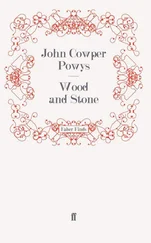John George Wood - Nature's Teachings
Здесь есть возможность читать онлайн «John George Wood - Nature's Teachings» — ознакомительный отрывок электронной книги совершенно бесплатно, а после прочтения отрывка купить полную версию. В некоторых случаях можно слушать аудио, скачать через торрент в формате fb2 и присутствует краткое содержание. Издательство: Иностранный паблик, Жанр: foreign_antique, Природа и животные, foreign_edu, на английском языке. Описание произведения, (предисловие) а так же отзывы посетителей доступны на портале библиотеки ЛибКат.
- Название:Nature's Teachings
- Автор:
- Издательство:Иностранный паблик
- Жанр:
- Год:неизвестен
- ISBN:нет данных
- Рейтинг книги:5 / 5. Голосов: 1
-
Избранное:Добавить в избранное
- Отзывы:
-
Ваша оценка:
- 100
- 1
- 2
- 3
- 4
- 5
Nature's Teachings: краткое содержание, описание и аннотация
Предлагаем к чтению аннотацию, описание, краткое содержание или предисловие (зависит от того, что написал сам автор книги «Nature's Teachings»). Если вы не нашли необходимую информацию о книге — напишите в комментариях, мы постараемся отыскать её.
Nature's Teachings — читать онлайн ознакомительный отрывок
Ниже представлен текст книги, разбитый по страницам. Система сохранения места последней прочитанной страницы, позволяет с удобством читать онлайн бесплатно книгу «Nature's Teachings», без необходимости каждый раз заново искать на чём Вы остановились. Поставьте закладку, и сможете в любой момент перейти на страницу, на которой закончили чтение.
Интервал:
Закладка:
It is tolerably evident that the invention of the spear and dagger must have been nearly, if not quite, contemporaneous with that of the club. I place these weapons together because there is great difficulty in assigning to either of them the precedence, the spear being but a more or less elongated dagger, and the dagger a shortened spear.
As a good example of this fact, I have in my collection a number of spears and daggers belonging to the Fan tribe of Western Africa. In every case the weapons correspond so closely with each other, that if the daggers were attached to shafts they would exactly resemble the spears, and if the spears were cut off within a few inches of the head, they would be taken for daggers.
I may here mention that as this part of the subject merely involves the employment of a pointed or thrusting weapon, instead of the club or sword, both of which are used for striking, the question of poison, barbs, and sheaths will be treated on another page.
The primary origin of the Spear is probably the thorn, as a savage who had been wounded by a thorn would easily pass to the conclusion that a thorn of larger size would enable him to kill an enemy in war, or an animal in hunting. Anything of sufficient dimensions, which either possessed a natural point or could be sharpened into a point, would be available for the purpose of the hunter or warrior.
Accordingly we find that such objects as the beak of the heron or stork, the sharp hind-claw of the kangaroo, the bone of the sting-ray, the beak of the sword-fish, and many similar objects, are employed for the heads of spears, or used simply as daggers.
As to artificial spears, nothing is easier than to scrape a stick to a point, and then, if needful, to harden it in the fire. This is, indeed, one of the commonest forms of primitive spears, and I have in my collection many examples of such weapons. Another simple form of this weapon is that which is made by cutting a stick or similar object diagonally.
Hollow rods—such, for example, as the bamboo—are the best for this purpose. I have now before me a cast of a most interesting weapon discovered by Colonel Lane Fox. It is the head of a spear, and is formed from part of the leg-bone of a sheep. At one end there is a simple round hole, which acted as a socket for the reception of the shaft, and the other end is cut away diagonally, so as to leave a tolerably sharp point.
As to the bamboo, it has a great advantage in the thinness of its walls, and the coating of flinty substance with which it is surrounded, and which gives its edges a knife-like sharpness. Indeed, so very sharp is the silex, that splinters of bamboo are still used as knives, and with them a skilful operator can cut up a large hog as expeditiously as one of our pork-butchers could do with the best knife that Sheffield produces.
I possess several of these weapons, and formidable arms of offence they are. If the reader can imagine to himself a toothpick, a foot or more in length, made from bamboo instead of quill, and having its edges nearly as sharp as a razor, he can realise the force of even so simple a weapon. In the case of the bamboo, too, celerity of manufacture has its value, for any one can make a couple of spears in less than as many minutes. All he has to do is to cut down a joint of bamboo transversely, and then with a diagonal blow of his knife at the other end to form the point.
The force of such a weapon may be inferred from a remarkable combat that took place some sixty years ago, when the roads were not so safe as they are at present.
A gentleman, who happened to be a consummate master of the sword, was going along the highway at night, and was attacked by two footpads, he having no weapon but a bamboo cane.
One of them he temporarily disabled by a severe kick, and then turned to the other, whom he found to be pretty well as good a swordsman as himself, and to possess a good stick instead of a slight cane. The footpad soon discovered the discrepancy of weapons, and with a sharp blow smashed the cane to pieces, leaving only about eighteen inches in his antagonist’s hand.
Almost instinctively Baron – sprang under the man’s guard, and dashed the broken cane in his face. The footpad staggered with a groan, put his hands to his face, and ran away, followed by his companion, who did not desire another encounter with such an antagonist. When the victor reached his destination, he found that the footpad’s face must have been torn to pieces, for the clefts of the split bamboo were full of scraps of skin, flesh, and whisker hair.
It is worthy of notice that the combination of the club and the dagger is common to savage and civilised life, as may be seen by reference to the illustration in page 53, where the wooden club of savage warfare and the metal club and maces of civilisation are alike armed with a piercing as well as a bruising apparatus. Mostly the dagger is on the head of the mace or battle-axe, but, in some cases, the end of the handle acts as the dagger, and the head as the axe or mace.
A very good example of this formation is found in the wooden battle-axe, or “Patoo,” of New Zealand, a weapon which has been long superseded by modern fire-arms. A specimen in my possession is rather more than five feet in length. The head is just like that of an ordinary axe, while the handle tapers gradually to the end, where it terminates in a sharp spike. In actual combat the point was used much more than the axe.
CHAPTER II.
POISON, ANIMAL AND VEGETABLE.—PRINCIPLE OF THE BARB
Poison as applied to Weapons.—Its limited Use.—Animal and Vegetable Poisons.—Animal Poisons.—The Malayan Dagger, or Kris, and two Modes of poisoning it.—The Bosjesmans and their Arrows.—Snake Poison and its Preparation.—The Pseudo-barb.—The Poison-grub, or N’gwa.—Simple Mode of Preparation, and its terrible Effects.—Vegetable Poisons.—The Upas of Malacca.—The Wourali Poison of Tropical America.—Mode of preparing the various Arrows.—The Fan Tribe of West Africa, and their poisoned Arrows.—Subcutaneous Injection.—Examples in Nature.—The Poison-fang of the Serpent.—Sting of the Bee.—Tail of the Scorpion.—Fang of the Spider.—Sting of the Nettle.—Exotic Nettles and their Effects.—The Barb and its Developments.—The “Bunday” of Java.—Reversed Barbs of Western Africa.—Tongans and their Spears.—The Harpoon and Lernentoma, or Sprat-sucker.—The Main Gauche, or Brise-épée.
ANOTHER advance, if it may so be called, lay in increasing the deadly effect of the weapons by arming them with poison.
Without the poison, it was necessary to inflict wounds which in themselves were mortal; but with it a comparatively slight wound would suffice for death, providing only that the poison mixes with the blood. It is worthy of notice that cutting weapons, such as swords and axes, seldom, if ever, have been envenomed, the poison being reserved for piercing weapons, such as the dagger, the spear, and the arrow.
Perhaps the most diabolical invention of this kind was the Venetian stiletto, made of glass. It came to a very sharp point, and was hollow, the tube containing a liquid poison. When the dagger was used, it was driven into the body of the victim, and then snapped off in the wound, so that the poison was able to have its full effect.
Such poisons are of different kinds, and invariably animal or vegetable in their origin. Taking the animal poisons first, we come to the curious mode of poisoning the Malayan dagger, or “Kris.” The blade of the weapon is not smooth, but is forged from very fibrous steel, and then laid in strong acid until it is covered with multitudinous grooves, some of them being often so deep that the acid has eaten its way completely through the blade.
Читать дальшеИнтервал:
Закладка:
Похожие книги на «Nature's Teachings»
Представляем Вашему вниманию похожие книги на «Nature's Teachings» списком для выбора. Мы отобрали схожую по названию и смыслу литературу в надежде предоставить читателям больше вариантов отыскать новые, интересные, ещё непрочитанные произведения.
Обсуждение, отзывы о книге «Nature's Teachings» и просто собственные мнения читателей. Оставьте ваши комментарии, напишите, что Вы думаете о произведении, его смысле или главных героях. Укажите что конкретно понравилось, а что нет, и почему Вы так считаете.












